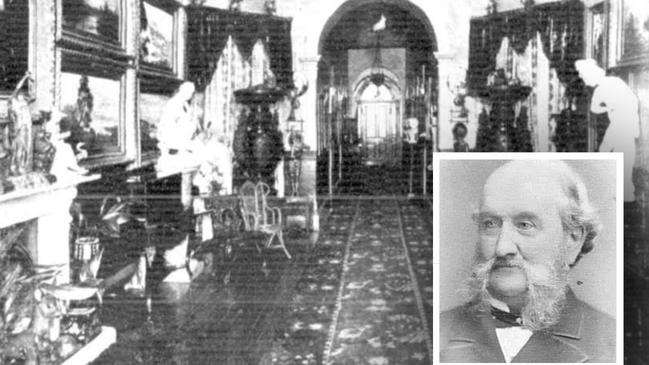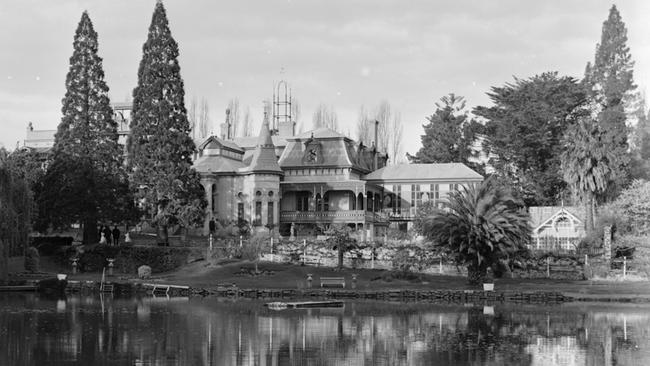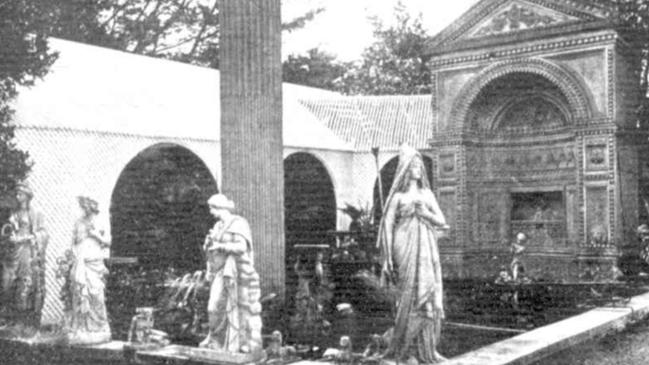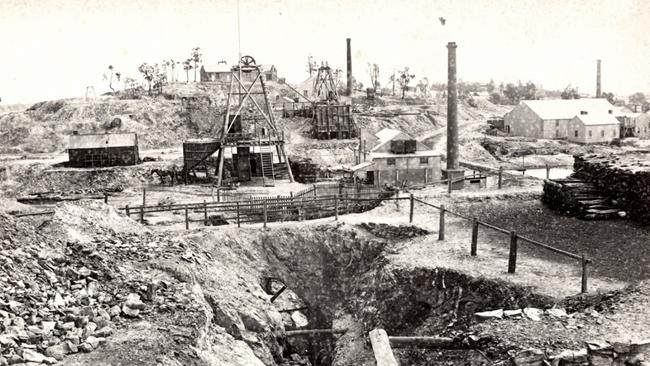Hidden fortune of Bendigo’s ‘Quartz King’ George Lansell
In the late 1800s Bendigo was briefly the world’s richest city — and much of it was owed to one man who used his extraordinary wealth to build a mysterious mansion.

Victoria
Don't miss out on the headlines from Victoria. Followed categories will be added to My News.
It was a Sunday auction like no other.
In June 1934, estate agents threw open the doors of a house in Bendigo for inspection before the bidding started.
Almost 3000 people were waiting to come inside.
After all, this was no ordinary house. The Fortuna estate, having once belonged to gold mining magnate George Lansell, was the biggest house in Australia in the late 1800s.
The now faded mansion, a haphazard collection of halls, passageways, towers and greenhouses, was filled to the brim with outlandish furnishings and art.
George Lansell had died in 1906 and, now that his wife Harriett had also passed, the whole lot was going under the hammer, furniture and all.

To the curious public (more than 5000 of them would eventually pass through the property) this might as well have been free admission to a theme park.
They gawked at the ornate ceilings, lavish entertaining areas and Romanesque garden features.
The art collection was just as eye watering.
The walls were covered with some of Europe and England’s best painters including John Constable, Andrea Locatelli and Franz Richard Unterberger.
There were hundreds of rare pictures.

Ornaments from the orient including a fine hand-carved Chinese fan adorned the mismatched but priceless furniture.
Lansell had bought ivory in the same way a modern Bendigo family would buy Kmart homewares. The stuff seemed to be everywhere.
Fortuna was a musty monument to a time that only a few of those rubber-neckers could remember.
The gold rush of the late 1800s made Bendigo the richest city in the world for a few gleaming moments, and much of it was owed to the man whose house they now reverently ogled, as if it were a tomb for those golden years.

‘DIG DEEPER’
George Lansell, born in Kent in 1823, had a stubborn will from the get go.
At the age of 30 he travelled to Australia with his brother in search of a fortune.
For a few months he tried panning for gold in South Australia, but found nothing.
He and his brother set up in Bendigo, reviving their family trade in candle and soap making.
They also ran a butcher that made money for a few years, until George turned his mind to gold.
His entire savings were used to by shares in mines, which failed.
For almost a decade Lansell lost good money after bad on mining ventures that totally bombed.
But as the mines failed, Lansell analysed and learned from their failures.

He closely examined the ways of quartz, the crystalline mineral that was found in abundant reefs beneath Bendigo.
Where there was quartz, gold was also found.
By 1865 Lansell had a large enough stake in three big mining operations to have the final say on operational strategy.
Lansell’s new technique involved digging deeper and ever deeper.
As a result his mines were some of the deepest in Australia, and they paid off handsomely.
After years of plunging good money after bad into failed ventures, Lansell’s mines began throwing up tonnes of gold. Soon he was a millionaire, perhaps the richest man in Australia and one of the richest in the world, and became known as Bendigo’s ‘Quartz King’.
His single-minded determination the expand mining in Bendigo created countless jobs, but mining was dangerous work.

Lansell also started a fund for the families of miners who lost their lives in the depths of the earth.
He was a hero to locals and a demon to his competitors, sometimes accused of sabotage and trickery, but nothing seems have ever been proved.
With the spoils of his stubborn faith in gold mining, Lansell renovated a villa between Golden Square and Ironbark, whacking on rooms and halls until it was a sprawling mansion.
In 1901 a newspaper journalist described trekking through a barren dust pile amid the sound of machinery to find the huge house, nestled among Lansell’s own mines.
Inside, Lansell’s extraordinary wealth was on display.
But he couldn’t take it with him.
He died in 1906, aged 83, and left behind his second wife, four sons and a daughter.
Gradually his estate was auctioned off. On the day thousands came to see Fortuna in 1934, the house failed to sell.
It still stands, and has only changed hands a few times since Lansell lived in it.
Its contents were split up and sold in auction houses throughout Victoria.
But Lansell’s huge contribution to Bendigo has not been forgotten. His statue stands in the centre of town, with a piece of quartz in his hand.
Originally published as Hidden fortune of Bendigo’s ‘Quartz King’ George Lansell


